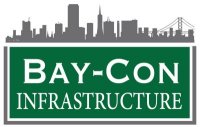When designing a temporary traffic control setup plan, it is critical to know the expected duration of the work activities. The California Manual on Uniform Traffic Control Devices (CA MUTCD) defines long, short, and intermediate-term stationary, short duration, and mobile setups and has different requirements for each.
Section 6G.02 Work Duration
Support:
01 Work duration is a major factor in determining the number and types of devices used in TTC zones. The duration of a TTC zone is defined relative to the length of time a work operation occupies a spot location.
Standard:
02 The five categories of work duration and their time at a location shall be:
A. Long-term stationary is work that occupies a location more than 3 days.
B. Intermediate-term stationary is work that occupies a location more than one daylight period up to 3 days, or nighttime work lasting more than 1 hour.
C. Short-term stationary is daytime work that occupies a location for more than 1 hour within a single daylight period.
D. Short duration is work that occupies a location up to 1 hour.
E. Mobile is work that moves intermittently or continuously.
Support:
03 At long-term stationary TTC zones, there is ample time to install and realize benefits from the full range of TTC procedures and devices that are available for use. Generally, larger channelizing devices, temporary roadways, and temporary traffic barriers are used.
Standard:
04 Since long-term operations extend into nighttime, retroreflective and/or illuminated devices shall be used in long-term stationary TTC zones.
Guidance:
05 Inappropriate markings in long-term stationary TTC zones should be removed and replaced with temporary markings.
Support:
06 In intermediate-term stationary TTC zones, it might not be feasible or practical to use procedures or devices that would be desirable for long-term stationary TTC zones, such as altered pavement markings, temporary traffic barriers, and temporary roadways. The increased time to place and remove these devices in some cases could significantly lengthen the project, thus increasing exposure time.
Standard:
07 Since intermediate-term operations extend into nighttime, retroreflective and/or illuminated devices shall be used in intermediate-term stationary TTC zones.
Support:
08 Most maintenance and utility operations are short-term stationary work.
09 As compared to stationary operations, mobile and short-duration operations are activities that might involve different treatments. Devices having greater mobility might be necessary such as signs mounted on trucks. Devices that are larger, more imposing, or more visible can be used effectively and economically. The mobility of the TTC zone is important.
Guidance:
10 Safety in short-duration or mobile operations should not be compromised by using fewer devices simply because the operation will frequently change its location.
Option:
11 Appropriately colored or marked vehicles with high-intensity rotating, flashing, oscillating, or strobe lights may be used in place of signs and channelizing devices for short-duration or mobile operations. These vehicles may be augmented with signs or arrow boards.
Support:
12 During short-duration work, it often takes longer to set up and remove the TTC zone than to perform the work. Workers face hazards in setting up and taking down the TTC zone. Also, since the work time is short, delays affecting road users are significantly increased when additional devices are installed and removed. Option:
13 Considering these factors, simplified control procedures may be warranted for short-duration work. A reduction in the number of devices may be offset by the use of other more dominant devices such as highintensity rotating, flashing, oscillating, or strobe lights on work vehicles.
Support:
14 Mobile operations often involve frequent short stops for activities such as litter cleanup, pothole patching, or utility operations, and are similar to short-duration operations.
Guidance:
15 Warning signs and high-intensity rotating, flashing, oscillating, or strobe lights should be used on the vehicles that are participating in the mobile work.
Option:
16 Flags and/or channelizing devices may additionally be used and moved periodically to keep them near the mobile work area.
17 Flaggers may be used for mobile operations that often involve frequent short stops. Support:
18 Mobile operations also include work activities where workers and equipment move along the road without stopping, usually at slow speeds. The advance warning area moves with the work area.
Guidance:
19 When mobile operations are being performed, a shadow vehicle equipped with an arrow board or a sign should follow the work vehicle, especially when vehicular traffic speeds or volumes are high. Where feasible, warning signs should be placed along the roadway and moved periodically as work progresses.
20 Under high-volume conditions, consideration should be given to scheduling mobile operations work during off-peak hours.
21 If there are mobile operations on a high-speed travel lane of a multi-lane divided highway, arrow boards and/or Portable Changeable Message Signs should be used.
Standard:
22 Mobile operations shall have appropriate devices on the equipment (that is, high-intensity rotating, flashing, oscillating, or strobe lights, signs, or special lighting), or shall use a separate vehicle with appropriate warning devices.
Option:
23 For mobile operations that move at speeds of less than 3 mph, mobile signs or stationary signing that is periodically retrieved and repositioned in the advance warning area may be used.
